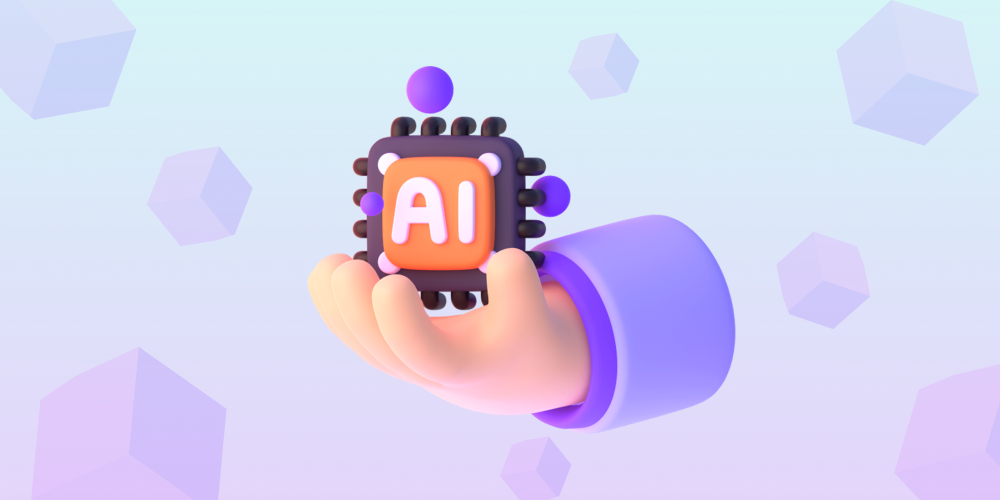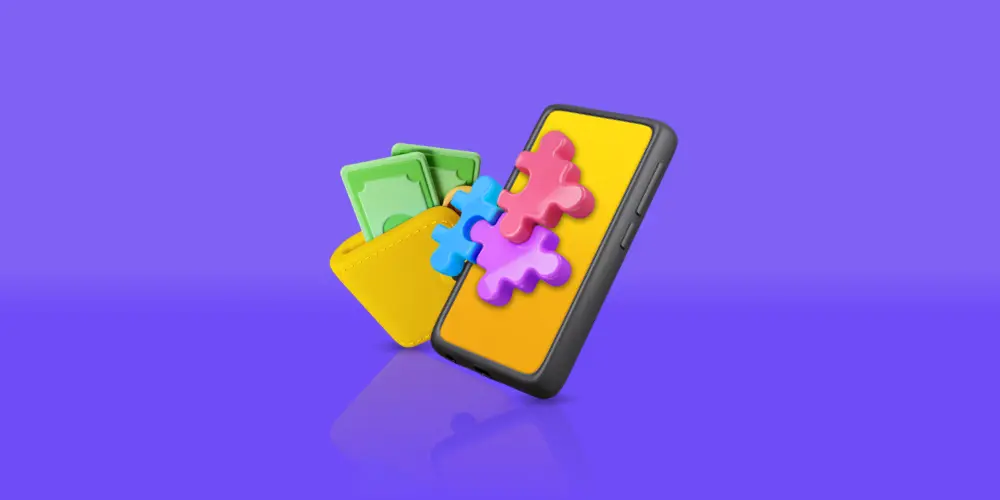
Mastering Real-World Physics in Games with ARKit
KEY POINTS OF THE ARTICLE
- ARKit is Apple’s software development kit that enables app developers to incorporate augmented reality into their apps
- ARKit simplifies the process of placing virtual objects in the real world, enhancing user experience
- The latest version of ARKit includes updates such as the lidar scanner and support for iPad Pro
- ARKit uses physics simulation to create more interactive apps, allowing real-world interaction
- Successful case studies have shown the integration of ARKit with physics simulation to enhance user engagement
- Building AR apps with ARKit requires setting up the development environment and incorporating physics into the app
Introduction
Augmented reality (AR) has become an increasingly popular technology in recent years, allowing users to experience virtual objects in the real world. Apple’s ARKit is a software development kit that has revolutionized AR app development on iOS devices. With ARKit, developers can easily integrate augmented reality into their apps, creating immersive experiences for users.
ARKit simplifies the process of placing virtual objects in the real world by handling tasks such as detecting movement and the local environment. This allows developers to focus on creating engaging content and enhancing the user experience. By leveraging the power of ARKit, developers can create apps that seamlessly blend virtual content with the real world, providing users with an interactive and immersive experience.
In this blog, we will explore the basics of ARKit and its role in augmented reality. We will also delve into how ARKit uses physics simulation to create more interactive apps and enhance user engagement. Additionally, we will take a look at successful case studies of ARKit projects that have integrated physics simulation to provide a more realistic and engaging experience.
Exploring the Basics of ARKit and Its Role in Augmented Reality
Augmented Reality (AR) has transformed how we interact with our physical surroundings by superimposing virtual content onto the real world, creating an immersive experience. ARKit, Apple’s AR development framework, leverages markerless tracking and physics simulation to integrate virtual objects seamlessly into reality. Its native Swift APIs, like RealityKit and Reality Composer, enable developers to create AR applications for iOS devices, unlocking a new realm of possibilities. ARKit’s role in AR goes beyond entertainment, with practical applications in various industries such as retail, education, and training. By understanding the basics of ARKit and its capabilities, developers can harness its power to craft captivating AR experiences that blend virtual elements with the real world seamlessly.
Understanding ARKit’s Core Technologies
ARKit’s core technologies form the backbone of its immersive AR experiences. By harnessing markerless tracking and physics simulation, ARKit seamlessly integrates virtual objects into users’ physical surroundings, creating a truly interactive environment. With its native Swift APIs and Reality Composer, ARKit facilitates the development of AR applications rich in animations and overlays. The inclusion of real-time estimation and collision detection enhances the realism of AR experiences, making ARKit a valuable tool for developers entering the AR development sphere. Through SceneKit and SpriteKit integration, ARKit enables the creation of stunning visual graphics and overlays, pushing the boundaries of what is possible in the realm of augmented reality. ARKit’s technological prowess is evident in its ability to bring virtual worlds to life on iOS devices.
The Evolution of ARKit: From Launch to Latest Version
Since its launch, ARKit has undergone remarkable evolution, introducing cutting-edge features to enhance augmented reality experiences. The latest version represents a significant leap in technology, integrating advanced capabilities for realistic physics simulation and markerless tracking. This evolution has revolutionized AR development, allowing developers to create more immersive and interactive applications. With the introduction of native Swift APIs and Reality Composer, ARKit has become a valuable tool for mobile development, enabling the seamless integration of virtual objects into the physical surroundings. The progression from basic overlays to sophisticated graphics and animations has transformed ARKit into a powerhouse for creating captivating AR experiences on iOS devices, pushing the boundaries of what is possible in the virtual world.
Real-World Physics in AR: Enhancing User Experience
Integrating real-world physics into augmented reality has the potential to greatly enhance the user experience. By simulating real-world physics, AR apps can provide a more interactive and realistic experience for users. Whether it’s the collision of virtual objects, realistic animations, or accurate physics-based interactions, incorporating real-world physics into AR can make the virtual content feel more tangible and immersive.
How ARKit Uses Physics to Create More Interactive Apps
ARKit utilizes physics simulation to create more interactive and engaging apps. By incorporating real-world physics into AR experiences, developers can enhance user engagement and make the virtual content feel more realistic.
Physics Simulation: ARKit provides developers with built-in physics simulation capabilities, allowing them to create realistic interactions between virtual objects and the real world. Some of the ways ARKit uses physics simulation to enhance user experience include:
- Collision Detection: ARKit can detect when virtual objects collide with each other or with the real world. This enables developers to create interactive experiences where virtual objects can interact with each other or with the user’s surroundings.
- Realistic Animations: By applying physics-based animations to virtual objects, developers can make them move and interact with the real world in a more realistic and natural way. This adds a level of realism and immersion to the AR experience.
- Real-World Interaction: ARKit allows users to interact with virtual objects using gestures and touch. By incorporating physics simulation, developers can create realistic responses to user interactions, making the virtual objects feel more tangible and responsive.
- Physics-based Effects: ARKit allows developers to apply physics-based effects to virtual objects, such as gravity or forces. This enables developers to create dynamic and interactive AR experiences where virtual objects respond to external forces or environmental conditions.
By leveraging physics simulation, ARKit enables developers to create more interactive and engaging AR apps that provide a realistic and immersive user experience.
Case Studies: Successful ARKit Projects with Physics Integration
Several successful ARKit projects have showcased the integration of physics simulation to enhance user engagement and create more realistic AR experiences. These case studies demonstrate the potential of combining arkit physics simulation to create interactive and engaging apps.
Case Study 1: Virtual Furniture Placement: One example is the use of ARKit to create apps that allow users to place virtual furniture in their real-world environment. By incorporating physics simulation, these apps can provide realistic interactions between virtual furniture and the user’s surroundings. Users can see how the furniture fits in their space, move it around, and even see how it responds to collisions with other objects or the environment.
Case Study 2: AR Gaming: Another successful implementation of physics integration in ARKit is in gaming. AR games that incorporate physics simulation can provide more immersive and interactive experiences. Users can interact with virtual objects, such as bouncing balls or falling blocks, and see how they behave in the real world. This adds a level of realism and engagement to the gaming experience.
These case studies demonstrate the potential of integrating physics simulation into ARKit projects to create more interactive and realistic AR experiences. By leveraging physics-based interactions, developers can enhance the user experience and provide a more immersive AR app.
The Technical Side: Building an AR App with ARKit
Building an AR app with ARKit requires a deep understanding of the technical aspects involved. From setting up the development environment to incorporating physics into the app, there are various steps that developers need to follow to create a successful AR experience.
Setting Up Your Development Environment for ARKit
Setting up the development environment is the first step in building an AR app with ARKit. This involves ensuring that you have the necessary software and hardware to develop and test ARKit apps.
Software Requirements: To develop ARKit apps, you need a Mac computer running Xcode, Apple’s integrated development environment. Xcode provides the necessary tools and APIs for developing and testing AR apps. It also includes the ARKit framework, which is essential for building AR experiences.
Hardware Requirements: ARKit is available on iOS devices, so you will need an iPhone or iPad to develop and test AR apps. It’s important to note that not all iOS devices support ARKit. You will need a device with an A9 or later processor to leverage the full capabilities of ARKit.
Native Swift APIs: ARKit provides native Swift APIs that developers can use to interact with AR features, such as tracking, detection, and physics simulation. These APIs make it easier for developers to incorporate AR functionality into their apps and create immersive AR experiences.
By setting up the development environment correctly and leveraging the native Swift APIs provided by ARKit, developers can start building AR apps that take full advantage of the framework’s features and capabilities.
Incorporating Physics into Your ARKit App
Incorporating physics simulation into your ARKit app is essential for creating realistic and interactive AR experiences. By leveraging the physics capabilities provided by ARKit, developers can bring virtual objects to life and make them interact with the real world.
Collision: One way to incorporate physics into your ARKit app is by handling collision detection. ARKit can detect when virtual objects collide with each other or with the real world, allowing developers to create interactive and dynamic AR experiences.
Animations: Physics-based animations can also be incorporated into ARKit apps to make virtual objects move and interact with the real world in a more realistic and natural way. By applying forces and constraints to virtual objects, developers can create animations that mimic real-world physics.
Interactions: ARKit allows users to interact with virtual objects using touch and gestures. By incorporating physics simulation, developers can create realistic responses to user interactions, making the virtual objects feel more tangible and responsive.
By incorporating physics simulation into your ARKit app, you can create a more immersive and interactive AR experience that blurs the line between the virtual and real world.
Overcoming Challenges in ARKit Development
Developing ARKit apps comes with its own set of challenges. From implementing physics simulation to optimizing performance, developers need to overcome various hurdles to create successful AR experiences.
Common Pitfalls in Implementing Physics in AR and Solutions
Implementing physics simulation in ARKit apps can sometimes be challenging, and developers often encounter common pitfalls. However, with the right approach and solutions, these challenges can be overcome.
Pitfall 1: Performance Issues: Physics simulation can be computationally expensive, leading to performance issues in AR apps. To overcome this, developers can optimize the physics simulation by reducing the number of calculations, simplifying the physics model, or using more efficient algorithms.
Pitfall 2: Unrealistic Interactions: When implementing physics simulation, it’s important to ensure that the interactions between virtual objects and the real world are realistic. This can be achieved by tweaking the physics parameters, adjusting the forces and constraints applied to the objects, and fine-tuning the collision detection.
Pitfall 3: Unrealistic Physics Models: Creating realistic physics models for virtual objects can be challenging. Developers need to have a deep understanding of the physics principles involved and accurately simulate real-world physics. This can be achieved by conducting thorough research, consulting physics experts, and testing the physics simulation extensively.
By addressing these common pitfalls and implementing solutions, developers can successfully integrate physics simulation into their ARKit apps and create more realistic and engaging AR experiences.
Optimizing Performance for Complex AR Apps
Optimizing performance is crucial when developing complex AR apps with physics simulation. To ensure smooth and responsive AR experiences, developers need to optimize their apps for performance.
Reduce Polygons: Complex 3D models with high polygon counts can impact the performance of AR apps. By optimizing the 3D models and reducing the polygon count, developers can improve the performance of their AR apps.
Simplify Physics Simulation: Physics simulation can be computationally expensive, especially in complex AR apps. Developers can optimize performance by simplifying the physics model, reducing the number of calculations, and using more efficient algorithms.
Level of Detail (LOD): Implementing level of detail techniques can improve performance by dynamically reducing the level of detail of 3D models based on their distance from the camera. This allows developers to maintain visual fidelity while reducing the computational load.
Caching: Caching can help improve performance by reusing precomputed data or calculations. By caching physics simulations or other computationally expensive operations, developers can reduce the processing time required for each frame.
By implementing these performance optimization techniques, developers can ensure that their complex AR apps with physics simulation run smoothly and provide a seamless user experience.
The Future of ARKit and Real-World Physics Integration
The integration of real-world physics in ARKit represents a significant leap forward in creating immersive experiences. As technology advances, the fusion of virtual and physical surroundings will only become more seamless. ARKit’s ability to simulate physics opens up endless possibilities for educational purposes and entertainment alike. From accurate physics-based interactions to lifelike collisions, the future holds exciting prospects for AR applications. With ongoing developments in markerless tracking and real-time estimations, ARKit is set to revolutionize how users engage with virtual content. The synergy between ARKit and real-world physics is a powerful combination that is reshaping the landscape of augmented reality experiences.
Upcoming Features in ARKit: What Developers Can Look Forward To
ARKit continues to evolve, and developers can look forward to exciting new features and enhancements that will further enhance the AR experience. Apple regularly updates ARKit, introducing new capabilities and tools for developers.
Some upcoming features in ARKit include improved tracking, which will provide more accurate and stable AR experiences. This will allow virtual objects to be placed and interacted with more seamlessly in the real world.
Additionally, developers can look forward to more advanced physics simulation capabilities in ARKit. This will enable the creation of even more realistic and interactive AR experiences, with virtual objects behaving and interacting with the real world in a more natural and lifelike manner.
Apple’s commitment to pushing the boundaries of augmented reality means that developers can expect continuous updates to ARKit, introducing new features and enhancements that will unlock new possibilities for AR experiences.
The Role of Machine Learning in Enhancing AR Physics
Machine learning plays a crucial role in enhancing AR physics within applications. By analyzing vast datasets, machine learning algorithms can improve physics simulations, creating more realistic interactions between virtual objects and the physical surroundings. This integration results in a more immersive experience for users, especially in educational purposes or real-world experiences. Machine learning also enhances markerless tracking accuracy and physics estimations in AR development. Through the utilization of advanced algorithms, ARKit can provide more precise collision detection, object placements, and real-time animations, significantly enhancing the user experience. Leveraging machine learning within AR applications enables educational game developers to push the boundaries of virtual content integration with the physical world, delivering cutting-edge AR experiences.
Practical Applications of ARKit in Various Industries
ARKit has practical applications in various industries, revolutionizing the way businesses and individuals interact with the digital world. From retail and e-commerce to education and training, ARKit has the potential to transform industries and provide new and exciting experiences.
Retail and E-Commerce: Revolutionizing Shopping with AR
Augmented Reality (AR) is revolutionizing the retail and e-commerce industry by transforming the shopping experience. Through ARKit integration, customers can now visualize products in their physical surroundings before making a purchase, offering an immersive experience like never before. The use of markerless tracking and physics simulation enhances user engagement and allows for more interactive browsing. Retailers are leveraging AR to showcase virtual objects like furniture or clothing, enabling users to virtually try before they buy. This innovative technology not only improves the user experience but also serves as a valuable tool for businesses to boost sales and customer satisfaction.
Education and Training: Making Learning More Interactive
Augmented reality (AR) brings a new dimension to education and training by creating immersive experiences for learners. By integrating ARKit’s advanced physics simulation and markerless tracking, educational purposes are elevated to a whole new level. Students can interact with virtual objects in their physical surroundings, making learning more engaging and memorable. AR applications in education leverage the real-time estimation of ARKit to provide a valuable tool for teachers and students alike. From visualizing complex concepts to experiencing historical events firsthand, ARKit integration in education opens up a world of possibilities for interactive and experiential learning
Engaging the Community: Collaborative Projects and Open Source
Collaborative projects and open source initiatives play a pivotal role in fostering innovation within the AR development community. By leveraging the collective expertise and diverse perspectives of developers, ARKit integration becomes more seamless and efficient. Sharing ARKit projects not only inspires others but also accelerates learning through real-world examples. Resources like tutorials, forums, and social media platforms serve as valuable tools for collaboration and knowledge exchange. The open nature of AR development encourages constant evolution and creativity, pushing the boundaries of what augmented reality can achieve. Engaging the community in collaborative endeavors not only enriches the AR experience but also propels the technology forward, shaping the future of AR applications and experiences.
How Developers are Sharing Their ARKit Projects
Communities of ARKit developers are actively sharing their innovative projects across various platforms to inspire and collaborate. By leveraging social media, forums, and dedicated AR development hubs, developers showcase their creations and exchange insights on AR integration. Through tutorials and online resources, they disseminate knowledge on ARKit features and implementation techniques, fostering a culture of continuous learning and improvement. These shared experiences not only demonstrate the versatility of AR applications but also serve as valuable tools for aspiring developers looking to explore the vast potential of ARKit in their projects.
Resources for Learning and Collaboration on ARKit Development
For those interested in delving deeper into ARKit development, a plethora of resources and platforms stand ready to assist. Online tutorials, forums, and communities dedicated to AR development offer valuable insights and guidance. Platforms like Reality Composer and SceneKit provide tools to create immersive AR experiences seamlessly. For those keen on mobile development, learning Native Swift APIs is crucial for ARKit integration. Additionally, resources like ARKit documentation and GitHub repositories offer practical examples and projects for aspiring developers. Collaboration opportunities abound, fostering innovation and knowledge sharing within the AR community. With ARKit’s continuous evolution, staying updated on the latest developments and sharing experiences can enrich one’s journey in AR development and application.
Conclusion
In the realm of ARKit innovations, physics takes center stage, enhancing user experiences like never before. From interactive apps to successful projects, the evolution of ARKit showcases the fusion of technology and real-world physics. Overcoming challenges and optimizing performance are crucial in this dynamic landscape. Looking ahead, the future holds promising features and advancements, with machine learning playing a pivotal role. Practical applications span industries, revolutionizing retail, education, and more. Engage with the community, explore collaborative projects, and tap into open-source resources for an immersive ARKit journey. Curious to dive deeper? Let’s chat!































